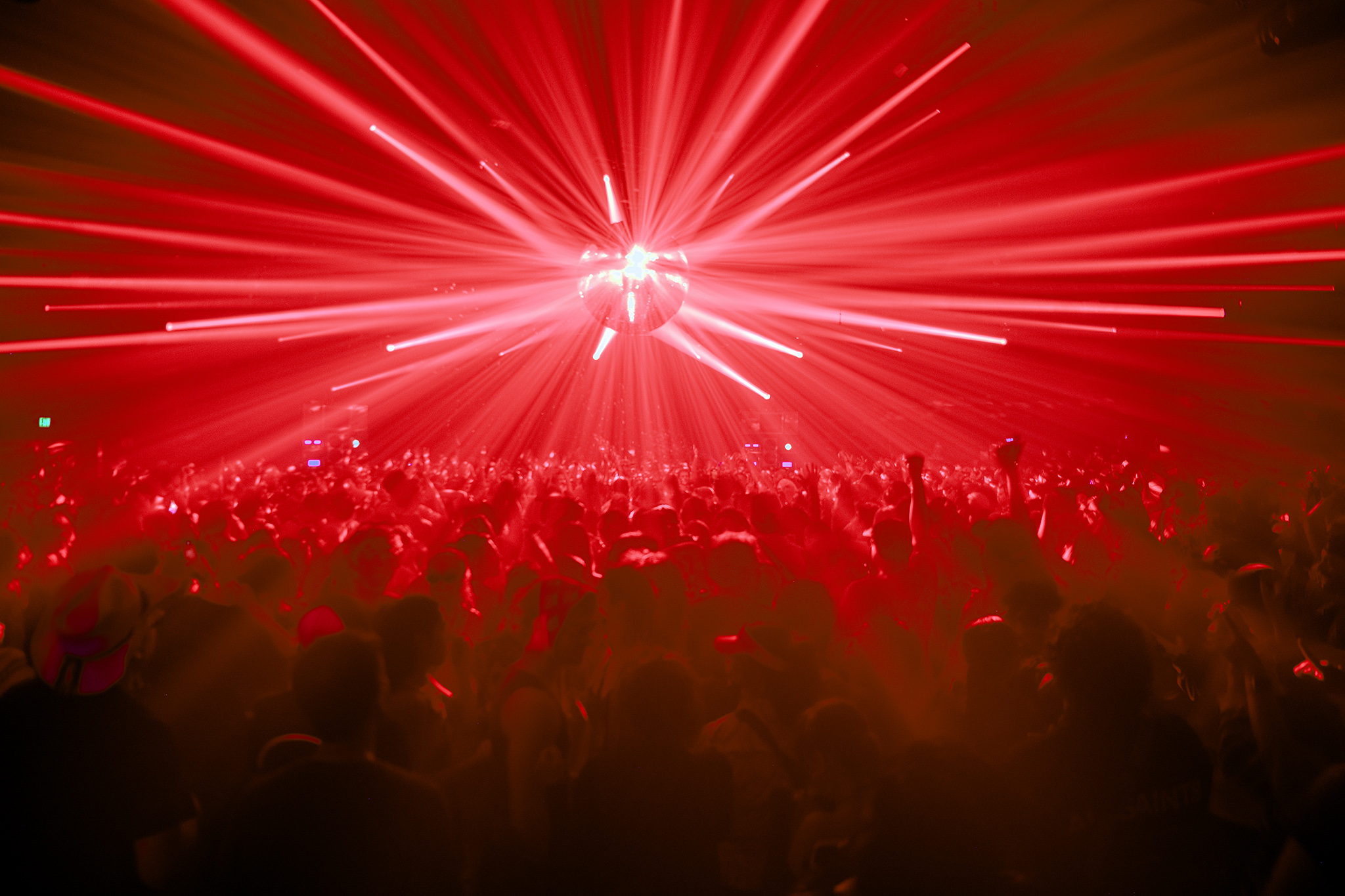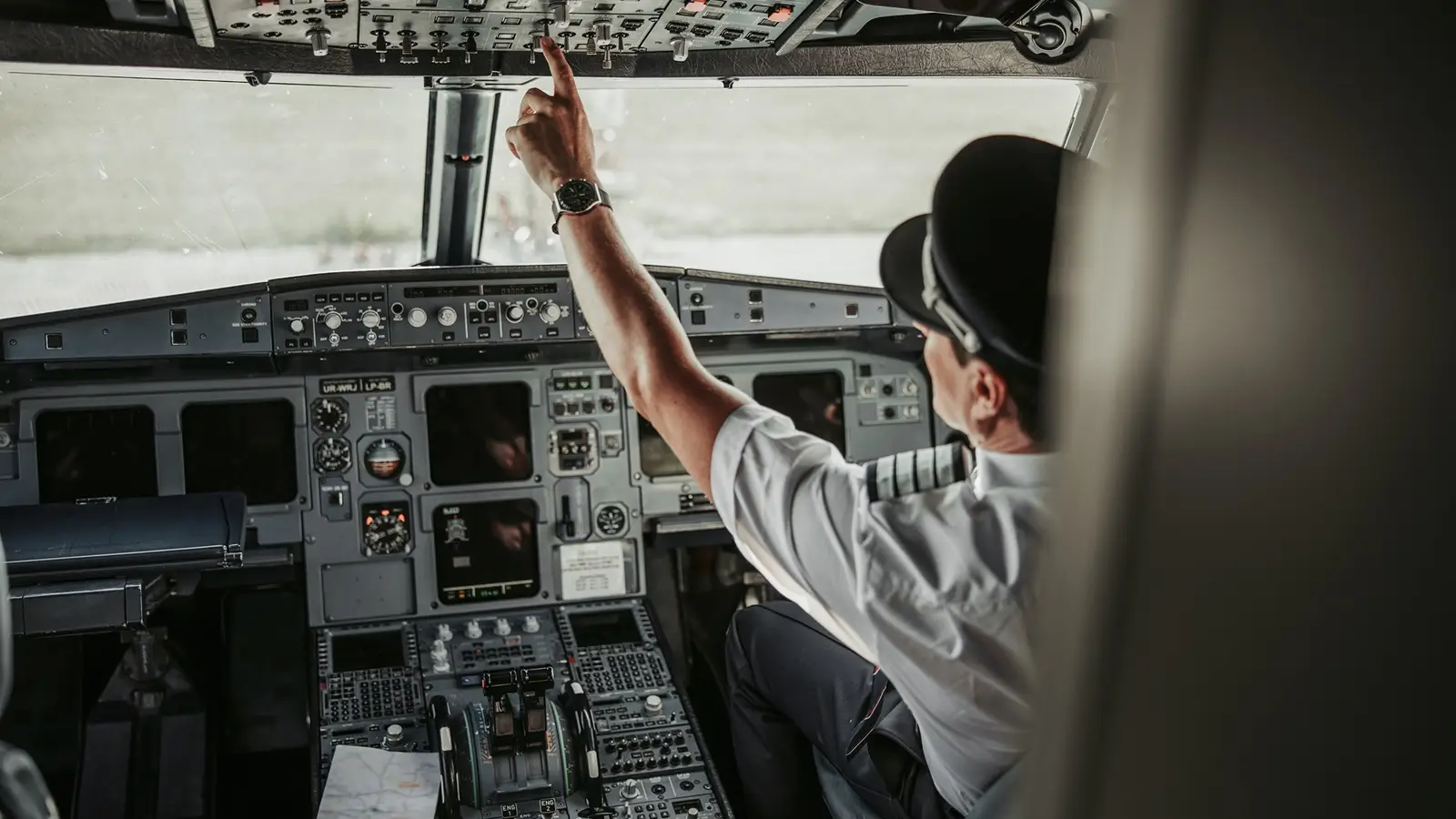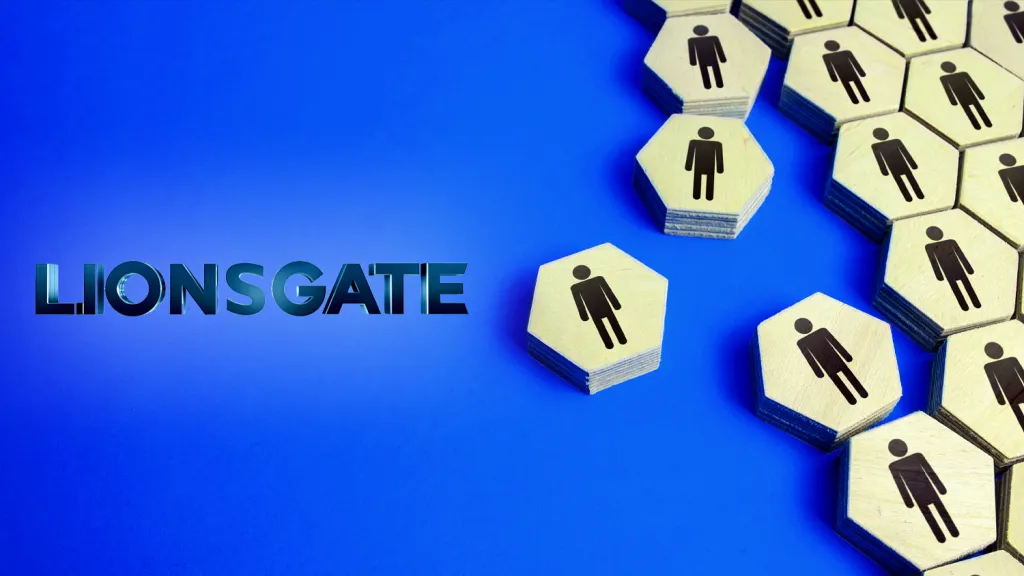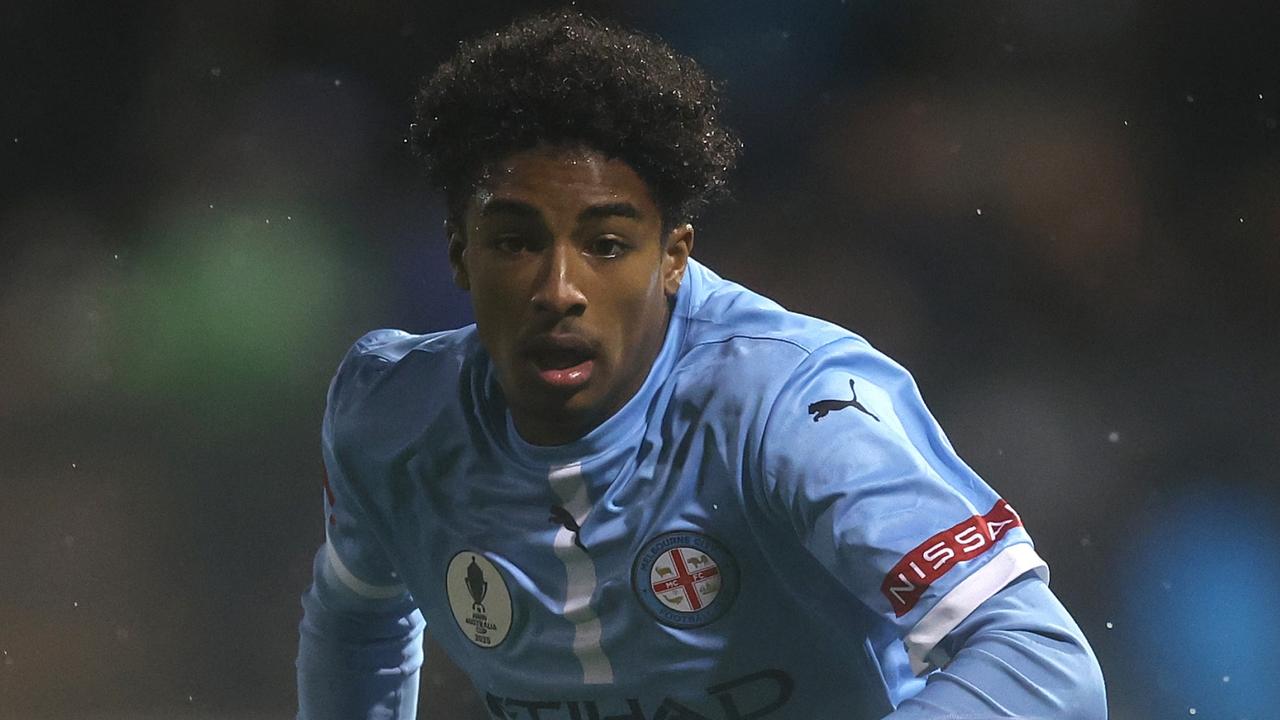
On Saturday afternoon at Portola Music Festival, hundreds of fans queued up outside an unassuming white tent, snaking from the north side of Pier 80 nearly all the way to the Crane Stage. When 3:15 p.m. struck, they slowly marched inside to a room cloaked in near total darkness, aside from seven glowing green McIntosh logos perched atop Stonehenge-esque speaker stacks.
The ’80s funk of Edwin Starr’s “Get Up Whirlpool” pulsed throughout the room, a remix by Rub N Tug’s Eric Duncan adding some extra oomph to the kick drums and dubbing out the bass lines. When the chorus hit, a sunrise worth of spotlights blasted at the biggest disco ball I’ve ever seen, washing the crowd in light as cheers erupted.
This is Despacio, an audiophile dance environment that was arguably the best addition to the Portola Music Festival this year. Created by James Murphy of LCD Soundsystem and the Belgian brothers David and Stephen Dewaele (known as 2ManyDjs or Soulwax), it’s an entirely analog club experience that MusicTech called “the world’s greatest soundsystem” back in 2019. The soundsystem was first unveiled at Manchester International Festival in 2013, and now over a decade later, it’s traversed the globe several times over, perhaps most notably becoming a fixture at Coachella. Festival organizer Danny Bell had been eyeing the soundsystem since year one of Portola, and finally the stars aligned to bring it to SF.
Advertisement
Article continues below this ad
“I’ve been following Despacio since the very beginning, in the inception. And it’s just a blast. It’s very special,” Bell told SFGATE. “It’s very unique. And, you know, it’s fun being able to experience an environment dreamt up by three of your pioneers, being able to play the exact music they want in the exact place they want to. It just creates a special vibe.”
Housed in a closed off tent on the north side of the festival, there was a queue for much of the day to enter, but it was quick and orderly, making it easy enough to dip in for a 15-minute dance session between acts on the main stages.
The system itself is comprised of seven towering speaker stacks arranged in a circle surrounding a checkered dance floor. Despacio sounds unlike anything most clubbers have ever heard. A completely analog signal chain, from vinyl records to the McIntosh amps — similar to those that once powered the Grateful Dead’s legendary Wall of Sound — give the music a buttery sheen that’s somehow both crystal clear and aggressively raw. Of course, it’s incredibly loud, but something about the fidelity creates a sensation that’s soothing and physical.
Advertisement
Article continues below this ad
“Just listening to music on hi-fi audio is a very different experience versus digital, and it’s something that it’s tough to describe. You really need to feel it yourself,” Bell said.
In addition to unparalleled fidelity, the space itself sets itself apart from most modern club experiences in that the DJ booth is essentially hidden, making it impossible to see who’s playing records (it’s always either Murphy, or David or Stephen from 2ManyDjs). That means instead of the crowd staring, transfixed at the performer, they’re dancing with each other.
The musical programming is also dramatically different than what you’re likely to hear at a modern day music festival. When the gates first opened, the DJs were playing music that hovered around 90 BPMs, slow, dubby un-Shazamable disco records that are a far cry from the frenetic and aggressive EDM drops that thunder out from the main festival stages (Despacio translates to “slow” in Spanish). Think classics like Carly Simon’s “Why,” with Nile Rogers’ hip-shaking guitar lines, the type of track that’s a favorite of DJs but is simply too slow to play to most contemporary dance floors. The music did speed up later, with disco anthems like Marta Acuna’s “Dance, Dance, Dance,” but even more aggressive acid house basslines simply hit different on this system. The whole experience feels indulgent in the very best way.
Advertisement
Article continues below this ad
“It really is this special thing that these three avid music connoisseurs and obviously very successful, influential artists have created, and it’s purely out of love. It’s their favorite thing to do,” Bell told SFGATE.



